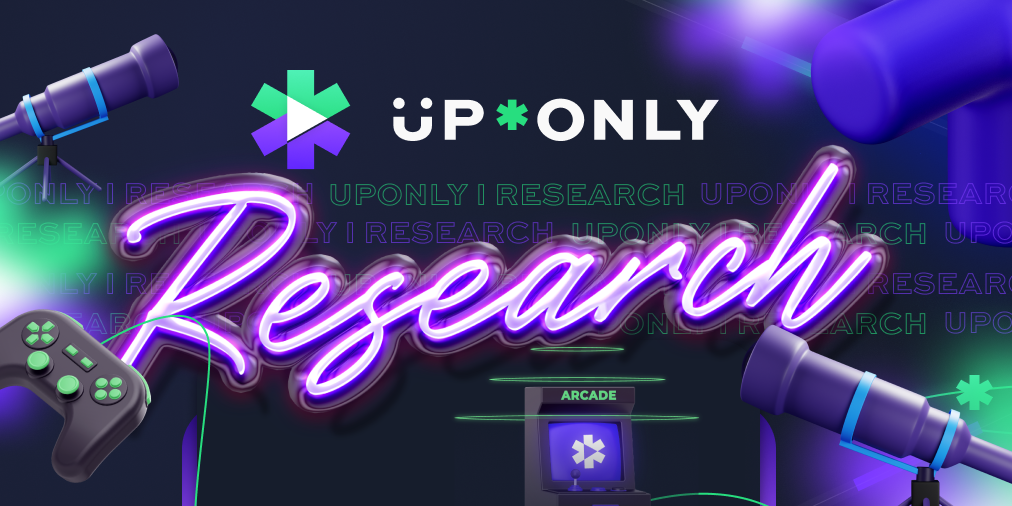Are 40% of Web3 Gaming Accounts Bots?
UpOnly | Research #27: Botting creeps into Web3 gaming. Does blockchain have the answer?
The presence of AI gaming bots has long plagued the gaming industry. AI bots undermine the effort of genuine players and serve as a channel for their creators to gain undue advantage or generate illicit profits. A recent study found that bots remain prevalent in play-to-earn and Web3 games. Up to 40% of the player base for most Web3 games are allegedly bots, raising concerns that investors might be overestimating the industry’s growth.
This edition of UpOnly | Research analyzes the multi-decade-long issue of bot usage in gaming. We also dive deeper into the alleged increased bot usage in Web3 games and consider how the underlying blockchain technology could provide a permanent solution.
The battle against AI Gaming bots
Gaming bots refer to the use of AI-based software to play a game. Game developers typically create AI bots to allow players to compete in player vs. environment (PvE) modes.
However, bad actors abuse AI use in gaming by designing bots that act as human players. These third-party bots compete against the system bots or other human players in multi-player modes to earn in-game rewards. Bot creators use accumulated dividends to enhance the bot's performance, sell it to other players to boost gameplay, or convert it to cash.
Bots are ‘tireless’ computer programs designed to exploit loopholes in gameplay design to achieve the best possible outcomes. They ruin the game experience for real players since it is tricky for them to compete against bots. The most common type of AI gaming bot, "farming bots,” generates clicks and other automated processes that allow creators to amass in-game rewards faster.
AI bots are prevalent in games that offer economic incentives and have been a massive problem for game developers in recent decades. Although most developers have strict policies prohibiting bot usage, the practice has thrived. A 2020 report by Statista confirms that up to 41% of gamers in the United States have used gaming bots.
(Source: Statista)
Last December, Amazon Games banned nearly 8,000 accounts using bots on its online game New World. MMORPG developer Smilegate banned over a million bots from its Lost Ark game this May. Before then, studies estimated that around 73% of the game’s player base were AI bots.
Study finds 60% of Web3 gaming accounts are human
The economic incentives associated with blockchain-based games make it unsurprising that botting has trickled into the industry. Recent data shared by anti-bot protection startup Jiggy reveals that the majority of Web3 gaming accounts are human (60%), but the percentage of bots is concerning (40%).
Blockchain’s transparency makes it easier to link wallets belonging to the same individual and compare them against a list of the game’s token holders. This feature gives Web3 games an edge over traditional games in the fight against bots.
The study reviewed over 60 games and services and detected up to 200,000 bot accounts. Popular titles such as Chain Games, DeRace, and God’s Unchained had fewer than five percent of bot accounts. On the flip side, others, such as Mobox, Tiny World, and Revv, had roughly half their player base as bot accounts.
The number of bots in Web3 gaming is noteworthy - the GameFi industry is still in its early years and offers lucrative rewards that naturally attract bot deployers. Meanwhile, Web3 games, like their Web2 counterparts, have policies to deal with bot activity. For instance, Axie Infinity banned several bot farming accounts in July 2021, rendering NFTs acquired by these players useless.
Can blockchain solve the botting issue in games?
Most gaming studios are implementing counter-algorithms to detect bot usage. This approach has been successful. Yet, game developers could improve bot detection by relying on blockchain’s inherent transparency, as evident by the Jiggy report.
Blockchain gaming accounts are often tied with addresses that players use to interact with Web3 games. Hence, relying on on-chain data such as asset transfers makes it easier to detect players using multiple accounts to cheat the system. Further, the blockchain trail ensures that other players can monitor account bans and refrain from pursuing a similar course.
Lastly, blockchain’s transparency helps new players and investors to detect and avoid Web3 games that inflate player count and economic value through bot usage. The result is that sound games flourish, and the industry attracts more mainstream players.
Navigate the Web3 gaming world with UpOnly
UpOnly is a Web3 data directory providing insights into play-to-earn, move-to-earn, and Metaverse gaming ventures. UpOnly enables access to valuable on-chain data helping players determine the best Web3 games and investors the best ecosystems to back.
UpOnly’s week in review
UpOnly Lines Up Staking and Tournament Service Upgrades
About UpOnly
UpOnly is a first-of-kind data directory that provides insightful and actionable data on the move-to-earn, play-to-earn, and Metaverse gaming fields. We aim to become a one-stop shop for gamers worldwide to identify the most lucrative play-to-earn opportunities and optimize their performance. Alongside our data directory, we will launch a decentralized prediction platform allowing anyone globally to bet on the outcome of play-to-earn and Metaverse gaming events.




